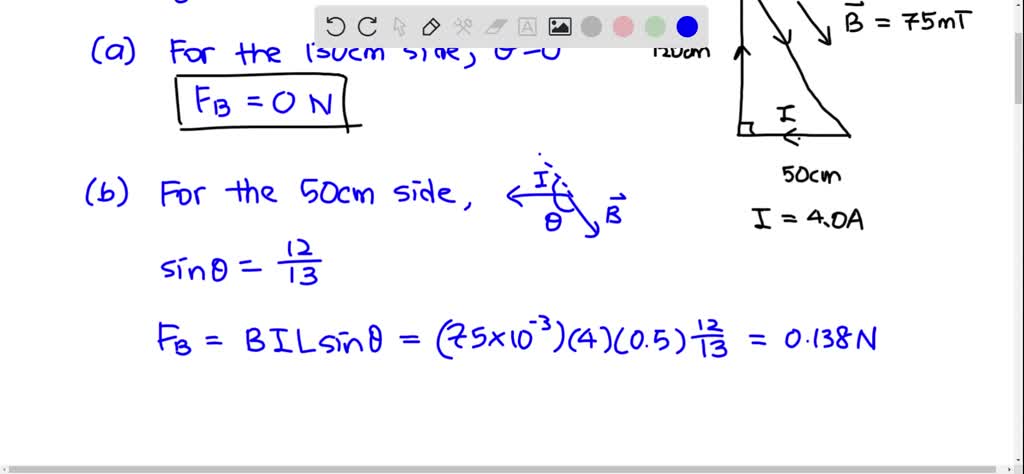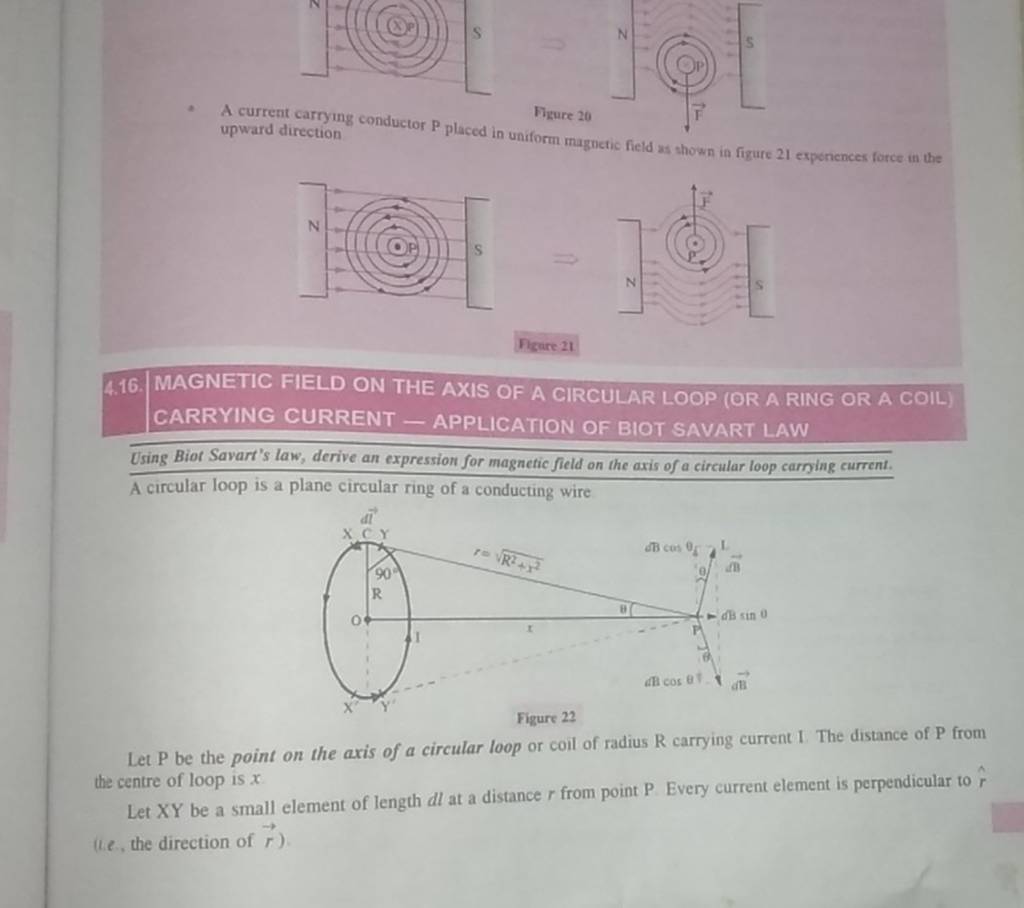Imagine a tiny, invisible world where electricity dances in a mesmerizing loop, creating a force that shapes our lives. This world is the realm of the single-turn current loop, an often overlooked but profoundly influential phenomenon in physics and engineering. From the humble electric motor to the intricate circuits of our smartphones, these loops play a crucial role in powering our modern world. But what exactly are they, and how do they work their magic? Let’s embark on a journey to uncover the secrets of the single-turn current loop, understanding its fundamental principles and appreciating its far-reaching applications.

Image: www.numerade.com
The single-turn current loop – a simple yet fundamental concept in electromagnetism – is essentially a closed path of conducting material through which an electric current flows. Picture a simple wire bent into a circle; this is a classic example of a single-turn current loop. While seemingly straightforward, this arrangement possesses remarkable properties that underpin a vast array of technologies.
A Loop with a Twist: Understanding the Magnetic Field
The beauty of a single-turn current loop lies in its ability to generate a magnetic field – a region of space where magnetic forces are present. This invisible force, often represented by magnetic field lines, emerges from the current flowing through the loop. The direction of the magnetic field can be determined using the right-hand rule, where your thumb points in the direction of the current flow and your curled fingers indicate the direction of the magnetic field lines. The strength of this magnetic field is directly proportional to the magnitude of the current flowing through the loop, effectively showcasing the link between electricity and magnetism.
Beyond the Basics: Delving into the Magnetic Dipole Moment
A single-turn current loop can be more than just a source of a magnetic field – it also embodies an essential concept in magnetism known as the magnetic dipole moment. This moment is a vector quantity, representing the strength and the direction of the magnetic field produced by the loop. Its magnitude is directly proportional to the product of the current flowing through the loop and the area enclosed by the loop, effectively emphasizing the significance of both the current and the loop’s geometry in determining the magnetic field strength.
Real-World Applications: The Power of the Loop
The magnetic field generated by a single-turn current loop finds practical applications across a wide range of technologies, from the commonplace to the groundbreaking:
-
Electric Motors: The heart of an electric motor is a rotating coil (multiple single-turn current loops) placed within a magnetic field. The interaction between the magnetic fields of the coil and the surrounding magnet creates torque, causing the motor to rotate. This fundamental principle drives everything from household appliances to industrial machinery.
-
Electromagnets: These devices employ a single-turn current loop wound around a ferromagnetic core. When current flows through the loop, it magnetizes the core, creating a powerful magnetic field. These electromagnets are used in countless applications, such as lifting heavy loads in cranes, creating magnetic resonance imaging (MRI) machines in healthcare, and powering various industrial processes.
-
Magnetic Sensors: Single-turn current loops play a vital role in magnetic sensors, which detect and measure magnetic fields. These sensors are indispensable in various industries, including automotive, aerospace, and robotics, where they monitor engine speeds, detect magnetic anomalies, and guide automated systems.
-
Magnetic Resonance Imaging (MRI): A complex process involving a spinning magnetic field. Large electromagnets based on the principles of the single-turn current loop create the necessary magnetic fields for generating detailed images of the human body’s internal structures without the need for X-rays.
-
Particle Accelerators: The generation of strong magnetic fields for guiding and accelerating charged particles in particle accelerators relies on the principle of the single-turn current loop. These powerful machines are used to probe the fundamental constituents of matter and understand the laws of physics at the most fundamental levels.

Image: askfilo.com
The Future of the Loop: Unveiling New Frontiers
As technology continues to evolve, the importance of the single-turn current loop is only set to increase. Researchers are exploring novel ways to harness the power of these loops, discovering new applications that push the boundaries of scientific understanding and technological advancements. Future technologies, such as:
-
Wireless Power Transmission: The ability to transfer energy wirelessly, using resonant magnetic fields created by single-turn current loops, is a promising avenue for the future.
-
Quantum Computing: Understanding and controlling the magnetic behavior of electrons at the quantum level, which can be achieved using single-turn current loops, is a key element in the development of powerful quantum computers.
-
Advanced Sensors: The development of highly sensitive magnetic sensors based on single-turn current loops promises to revolutionize various fields, from medicine to environmental monitoring.
A Single-Turn Current Loop Carrying A Current Of
Mastering the Single-Turn: Empowering Your Understanding
A single-turn current loop may seem like a simple concept, yet its significance extends far beyond the boundaries of theoretical physics. Understanding its principles and appreciating its applications can empower you to grasp the fundamental mechanisms behind various technologies that shape our daily lives.
Explore further resources on electromagnetism and delve into the fascinating world of magnets and magnetic fields. Consider experimenting with simple circuits and observe the magnetic field created by a single-turn current loop firsthand. By embracing the power of knowledge, you can unlock a deeper understanding of the electrifying world around you!






